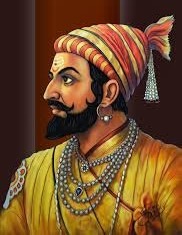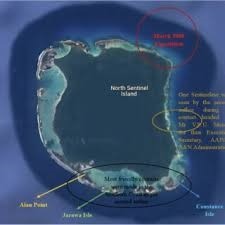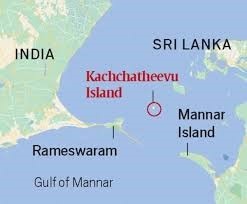Chhatrapati Shivaji Maharaj
Syllabus: GS1/ History, Famous Personalities
- Death Anniversary (April 3): A day to honor Chhatrapati Shivaji Maharaj, the visionary founder of the Maratha Empire.

Life and Leadership (1630-1680)
- Birth & Inspiration: Born as Shivaji Bhosale, he championed the cause of Swarajya (self-rule). Influenced by saints like Tukaram, Dnyaneshwar, and Ramdas, he upheld social equality and spiritual awakening.
- Coronation (1674): Proclaimed king at Raigad Fort, marking the start of the Rajyabhisheka Era.
Governance and Military Excellence
Administrative Reforms:
- Established the Ashta Pradhan Mandal (council of eight ministers) for effective governance.
- Replaced the Jagirdari system with the Ryotwari system, ensuring direct taxation for better revenue management.
Military & Naval Power:
- Strategically engaged with the Mughals, Bijapur, Golkonda, and European powers.
- Strengthened India’s maritime defenses by building a formidable naval force to safeguard trade and territorial integrity.
Enduring Legacy
- His name continues to inspire, with landmarks like INS Shivaji and the UNESCO-listed Chhatrapati Shivaji Terminus.
- Bal Gangadhar Tilak revived the Shivaji Festival in the 1890s, using his legacy to ignite nationalism.
- The Indian Navy’s new Ensign and Admirals’ shoulder insignia are tributes to his naval prowess and visionary leadership.
Consider the following statements about Shivaji’s relationship with the Mughals:
- Shivaji initially served under the Mughal emperor before rebelling.
- He signed the Treaty of Purandar (1665) with Raja Jai Singh of Amber.
- After escaping from Agra, he launched an aggressive campaign against the Mughals.
Which of the statements are correct?
A) 1 and 2 only
B) 2 and 3 only
C) 1 and 3 only
D) 1, 2, and 3
Answer: B) 2 and 3 only
Explanation:
Shivaji never served under the Mughals but had temporary truces with them. The Treaty of Purandar (1665) resulted in Shivaji ceding 23 forts, but after escaping from Agra (1666), he launched a fierce counterattack, re-establishing Maratha power.
North Sentinel Island
Syllabus: GS1/ Places In News
Recent Development:
- A U.S. citizen has been arrested for illegally entering North Sentinel Island, home to one of the world’s last uncontacted tribes.

Geographical Overview:
- Located in the Bay of Bengal, under the South Andaman administrative district of the Andaman and Nicobar Islands, India.
- Situated approximately 50 km west of Port Blair.
- Surrounded by coral reefs, making access via sea extremely challenging.
- Characterized by white-sand beaches, mangrove forests, and dense tropical vegetation.
- The 2004 Indian Ocean earthquake uplifted the island, exposing new coral reefs and increasing its landmass.
Sentinelese Tribe – Indigenous Inhabitants:
- Among the last uncontacted tribes in the world.
- Maintain complete isolation and display hostility towards outsiders.
- Follow a hunter-gatherer lifestyle, using bows, arrows, spears, and dugout canoes.
- Population estimates range between 50–150 individuals.
Legal Protection & Governance:
Andaman & Nicobar Islands (Protection of Aboriginal Tribes) Regulation, 1956:
- Prohibits travel within 5 nautical miles (9 km) of the island.
- Sentinelese are exempt from prosecution for acts of defensive aggression.
Restricted Area Permit (RAP):
Revoked in 2018 for 29 islands, but North Sentinel remains strictly off-limits.
Tourism, filming, fishing, and visits are strictly prohibited to protect the tribe and prevent external disease exposure.
Consider the following statements regarding North Sentinel Island:
- It is administratively part of the Middle Andaman district in the Andaman and Nicobar Islands.
- The 2004 Indian Ocean earthquake resulted in a reduction of the island’s landmass due to submersion of coastal areas.
- The island is surrounded by coral reefs, which act as a natural barrier against external intrusion.
- The Sentinelese are known to practice primitive forms of shifting agriculture in addition to hunting and gathering.
Which of the statements given above is/are correct?
(a) 1 and 2 only
(b) 3 only
(c) 2 and 4 only
(d) 1, 3, and 4 only
Explanation:
Statement 1 is incorrect: North Sentinel Island falls under the South Andaman administrative district, not Middle Andaman.
Statement 2 is incorrect: The 2004 earthquake uplifted portions of the island, increasing its landmass rather than reducing it.
Statement 3 is correct: The island is surrounded by coral reefs, making access extremely difficult.
Statement 4 is incorrect: The Sentinelese are strictly hunter-gatherers; they do not engage in agriculture.
Katchatheevu Island
Syllabus :GS 1/Places
Recent Developments
- The Tamil Nadu Legislative Assembly has passed a resolution urging the Union government to take steps to reclaim Katchatheevu Island from Sri Lanka.
- The demand is rooted in concerns over Tamil Nadu fishermen’s traditional fishing rights and the ongoing harassment by the Sri Lankan Navy.

About Katchatheevu Island
- Location: Situated in the Palk Strait, between Tamil Nadu, India, and northern Sri Lanka.
- Geography: A small, uninhabited island spanning approximately 285 acres.
- Proximity:
- 5 km south of Delft Island (Sri Lanka).
- 16 km northeast of Rameswaram (India).
Features:
- Lacks drinking water or permanent infrastructure.
- Houses a Catholic church dedicated to St. Anthony, a pilgrimage site for both Indian and Sri Lankan fishermen.
Historical Dispute
- Origins (1921): The dispute over Katchatheevu began between the British colonial administrations of Madras (India) and Ceylon (Sri Lanka).
Resolution (1974 & 1976 Agreements):
- 1974 Agreement: India officially recognized Sri Lanka’s sovereignty over Katchatheevu.
- 1976 Agreement: Defined maritime boundaries, including the Exclusive Economic Zones (EEZs) of both nations.
Key Provisions:
- Indian fishermen could visit Katchatheevu for the annual Anthony’s festival.
- However, fishing in Sri Lankan waters was strictly prohibited.
Strategic & Diplomatic Considerations
- India’s decision to cede Katchatheevu was influenced by broader diplomatic interests, particularly in maintaining favorable relations with Sri Lanka amidst its growing ties with China.
- In return, India secured sovereign rights over the Wadge Bank, a region near Kanniyakumari known for its rich marine resources.
Government’s Position
- The Union government has consistently opposed any move to reclaim Katchatheevu, arguing that the 1974 and 1976 agreements settled the dispute.
- The matter remains pending before the Supreme Court, where the government asserts that no Indian territory was ceded, as Katchatheevu was never under Indian sovereignty post-independence.
Conclusion
- While Tamil Nadu continues to push for the retrieval of Katchatheevu, the Union government maintains that the agreements remain legally binding.
- The dispute persists, particularly due to concerns over fishermen’s rights and Sri Lankan naval actions in the region.
Consider the following statements regarding the Katchatheevu Island dispute:
- The dispute over Katchatheevu began after India’s independence in 1947.
- The 1974 Agreement between India and Sri Lanka granted Sri Lankan sovereignty over Katchatheevu, but allowed Indian fishermen to fish in its surrounding waters.
- The 1976 Agreement demarcated the maritime boundaries and exclusive economic zones (EEZs) between India and Sri Lanka.
- India’s decision to recognize Sri Lankan sovereignty over Katchatheevu was influenced by its strategic interests in securing sovereign rights over the Wadge Bank.
Which of the statements given above are correct?
(a) 1 and 2 only
(b) 3 and 4 only
(c) 2, 3, and 4 only
(d) 1, 2, 3, and 4
Answer: (b) 3 and 4 only
Explanation:
Statement 1 is incorrect: The dispute over Katchatheevu dates back to 1921 during British rule, not post-independence.
Statement 2 is incorrect: The 1974 Agreement did not allow Indian fishermen to fish in Katchatheevu’s surrounding waters; they were only allowed to visit for the St. Anthony’s festival.
Statement 3 is correct: The 1976 Agreement established maritime boundaries and exclusive economic zones (EEZs) between India and Sri Lanka.
Statement 4 is correct: India’s strategic interests included securing Wadge Bank, a marine resource-rich region near Kanniyakumari.
President of Chile Visit to India
Syllabus: GS2/IR
Context:
- The President of Chile is on a state visit to India, marking 76 years of diplomatic relations between the two nations.
Key Discussions:
Trade and Economic Relations:
- Emphasis on expanding the India-Chile Preferential Trade Agreement (PTA), which was last updated in 2017.
- Initiation of negotiations for a Comprehensive Economic Partnership Agreement (CEPA) to enhance economic and trade integration.
Mining and Critical Minerals Cooperation:
- Strengthened collaboration in critical minerals essential for emerging technologies and clean energy.
- A major bilateral agreement was concluded between CODELCO (Chile’s National Copper Corporation) and Hindustan Copper Limited (HCL).
- Chile, home to the world’s largest copper reserves, aims to expand its market in India and reduce dependency on China.
Antarctic Cooperation:
- A Letter of Intent was signed to deepen scientific exchanges and Antarctic research collaboration.
About Chile:
Geography:
- A long, narrow country on the west coast of South America.
- Coastline: Extends over 6,437 km, but its width is only ~91 km.
- Cape Horn: The southernmost point of South America, infamous for extreme weather and treacherous seas.
Atacama Desert: The driest desert in the world, located in northern Chile.
Geological Features:
- Chile is part of the Pacific Ring of Fire, making it seismically active due to the subduction of the Nazca and Antarctic plates beneath the South American plate.
- Home to Escondida, the largest copper mine in the world, which contributes over 5% of global copper production.
- Rich in lithium and other strategic minerals, vital for battery technology and clean energy.
- This visit marks a strategic milestone in India-Chile relations, fostering economic integration, resource cooperation, and scientific collaboration
Consider the following statements regarding the India-Chile Preferential Trade Agreement (PTA):
- The agreement was first signed in 2006 and expanded in 2017 to include more tariff concessions.
- Under the PTA, both countries have agreed to eliminate tariffs on all traded goods over a 10-year period.
- Chile is India’s largest trade partner in South America.
Which of the statements given above is/are correct?
(a) 1 only
(b) 1 and 3 only
(c) 2 and 3 only
(d) 1, 2, and 3
Answer: (b) 1 and 3 only
Explanation:
The India-Chile PTA was first signed in 2006 and expanded in 2017, increasing the number of tariff concessions.
However, not all traded goods are duty-free, as PTAs generally cover only selected goods with reduced tariffs (Statement 2 is incorrect).
Chile is India’s largest trade partner in South America, particularly in the mining sector, where India imports copper and other minerals (Statement 3 is correct).
Fluoride Pollution Crisis in Sonbhadra
Syllabus: GS2/Health
Context:
- Reports indicate severe fluoride poisoning in the groundwater of Sonbhadra district, Uttar Pradesh, with fluoride levels 5 to 6 times higher than the permissible limit.
About Fluoride:
- Naturally occurring, non-biodegradable pollutant found in minerals, soil, water, and air.
- Also released as a byproduct during the burning of coal bricks.
- World Health Organization (WHO) limit: Maximum safe fluoride concentration in drinking water is 5 mg/L.
Health Impacts:
- Beneficial in safe doses: Strengthens teeth and bones, preventing decay.
- Harmful in excess: Leads to dental and skeletal fluorosis, causing joint pain, bone deformities, and stiffness.
Environmental Risks:
- Affects wildlife and ecosystems, disrupting biodiversity and aquatic life.
In the context of groundwater contamination in Sonbhadra, Uttar Pradesh, consider the following statements:
- Fluoride contamination in groundwater is exclusively due to industrial discharge.
- Excess fluoride intake can lead to skeletal fluorosis but has no impact on dental health.
- The World Health Organization (WHO) recommends a maximum fluoride concentration of 1.5 mg/L in drinking water.
Which of the statements given above is/are correct?
(a) 1 and 2 only
(b) 3 only
(c) 2 and 3 only
(d) 1, 2, and 3
Answer: (b) 3 only
Explanation:
Statement 1 is incorrect: While industrial discharge can contribute to fluoride pollution, natural geological sources and coal brick burning are also major causes of fluoride contamination in groundwater.
Statement 2 is incorrect: Fluoride toxicity causes both skeletal fluorosis (bone deformities and joint stiffness) and dental fluorosis (discoloration and damage to teeth enamel).
Statement 3 is correct: WHO prescribes a maximum safe fluoride level of 1.5 mg/L in drinking water.
Fiscal Health Index (FHI) 2025
Syllabus: GS2/Governance
Context:
- NITI Aayog, in collaboration with the Press Information Bureau, has released the Fiscal Health Index (FHI) 2025, evaluating the financial health of Indian states.
About FHI 2025:
- The index measures the fiscal sustainability of states based on key financial indicators.
- Covers 18 major states that significantly impact India’s GDP, public expenditure, and fiscal stability.
Sub-indices include:
- Quality of Expenditure – Efficiency in public spending.
- Revenue Mobilization – Effectiveness of tax and non-tax revenue collection.
- Fiscal Prudence – Adherence to budgetary discipline.
- Debt Index – The level and management of state debt.
- Debt Sustainability – The state’s ability to repay its debt without financial distress.
- Data sourced from the Comptroller and Auditor General of India (CAG) for the 2022-23 financial year.
Key Findings:
- Top Performers: Odisha ranks 1st, followed by Chhattisgarh, Goa, Jharkhand, and Gujarat.
- Public Finance Role: Indian states account for two-thirds of public spending and one-third of total revenue, directly influencing national economic stability.
- Debt Challenges: West Bengal and Punjab report high debt burdens with worsening debt-to-GSDP ratios, raising concerns over fiscal sustainability.
Consider the following statements regarding the Fiscal Health Index (FHI) 2025:
- It is released annually by NITI Aayog in collaboration with the Reserve Bank of India (RBI).
- The index includes indicators such as Quality of Expenditure, Revenue Mobilization, and Debt Sustainability.
- It evaluates all Indian states and Union Territories based on fiscal performance.
Which of the above statements is/are correct?
(a) 1 and 2 only
(b) 2 only
(c) 1 and 3 only
(d) 1, 2, and 3
Answer: (b) 2 only
Explanation:
The Fiscal Health Index (FHI) 2025 is released by NITI Aayog and the Press Information Bureau (PIB), not the RBI. Hence, Statement 1 is incorrect.
It assesses states based on sub-indices such as Quality of Expenditure, Revenue Mobilization, Debt Index, and Debt Sustainability, making Statement 2 correct.
The index does not cover all states and UTs; it evaluates only 18 major states, making Statement 3 incorrect.
SC Observations on Disqualification
Syllabus :GS 2/Governance
In News:
- The Supreme Court of India recently addressed petitions concerning the prolonged delay in disqualification proceedings of 10 Telangana MLAs who defected to the ruling Congress party.
Legal Provisions Governing Disqualification:
- Constitutional and Statutory Framework:
- Article 102 of the Indian Constitution and Section 8 of the Representation of the People (RP) Act, 1951 govern the disqualification of sitting legislators.
- The RP Act, 1951, while listing offenses leading to disqualification, does not specify the authority responsible for declaring a legislator disqualified.
- Article 103 of the Constitution mandates that the President of India decides on disqualification if a sitting MP is convicted of certain offenses, based on the Election Commission’s advice.
- Grounds for Disqualification:
A legislator is disqualified if they:
- Are convicted of specific offenses and sentenced to at least two years of imprisonment (under Section 8 of the RP Act).
- Are found guilty of offenses such as promoting enmity, bribery, corruption, and sexual crimes (Section 8 of the RP Act).
Supreme Court’s Key Rulings on Disqualification:
- Lily Thomas Case (2013):
- Struck down Section 8(4) of the RP Act, which previously allowed convicted sitting members a three-month window to appeal before disqualification took effect.
- The Court ruled that Parliament cannot provide special privileges to sitting members, as both candidates and incumbents must be treated equally under Article 102.
- Recent Supreme Court Observations (2024-25):
- The Speaker cannot indefinitely delay disqualification petitions under the Tenth Schedule (Anti-Defection Law) to undermine the law’s purpose.
- Courts have the power to ensure disqualification petitions are resolved within a reasonable timeframe, although they cannot dictate how the Speaker should decide.
- The Supreme Court has previously intervened in similar cases to compel Speakers to expedite pending disqualification decisions.
Anti-Defection Law (Tenth Schedule):
- Introduced in 1985 via the 52nd Constitutional Amendment to address political instability caused by frequent defections of legislators, which often led to government collapses.
Disqualifies legislators who:
- Voluntarily give up party membership or
- Vote against their party’s directives (whip) in the legislature.
- Amendment in 2003:
- Removed the provision (Paragraph 3) that previously allowed one-third of a party’s members to split and form a separate group.
- Strengthened the anti-defection law by allowing only mergers approved by two-thirds of the party’s members.
Consider the following statements regarding the disqualification of legislators in India:
- Article 102 of the Indian Constitution deals with the disqualification of members of Parliament, whereas Article 191 applies to members of State Legislatures.
- The President of India has the final authority to decide on the disqualification of MPs under all circumstances.
- The Supreme Court of India has ruled that a Speaker cannot indefinitely delay disqualification proceedings under the Tenth Schedule.
Which of the statements given above is/are correct?
(a) 1 and 3 only
(b) 2 and 3 only
(c) 1 and 2 only
(d) 1, 2, and 3
Answer: (a) 1 and 3 only
Explanation:
Statement 1 is correct: Article 102 deals with disqualification of MPs, while Article 191 applies to MLAs.
Statement 2 is incorrect: The President decides disqualification only in cases of holding an office of profit, mental unsoundness, insolvency, or foreign citizenship. However, for disqualification under the Representation of the People Act (RP Act) or the Tenth Schedule, the decision is taken by the Election Commission (for criminal convictions) or the Speaker (for defections).
Statement 3 is correct: The Supreme Court has ruled that Speakers cannot indefinitely delay disqualification proceedings and courts have the power to enforce a timely decision.
India’s 10-year Bond Yields Declined
Syllabus: GS3/ Economy
Context
India’s benchmark 10-year bond yield fell significantly by nine basis points (bps) to 6.49% year-on-year following the Reserve Bank of India’s (RBI) decision to purchase ₹80,000 crore worth of government bonds in April.
Key Insights
Indian Bond Market Trends
- The 10-year bond yield has declined 24 bps since March and 62 bps in FY 2024-25, marking its sharpest drop in five years.
- Banking sector liquidity has improved, further reducing bond yields.
- Treasury bill cut-offs are nearing 30%, indicating a more liquid financial environment.
Understanding Bond Yields
- Bond Yield: The expected return on investment from a bond, expressed as an annual percentage.
Types of Bond Yields
- Current Yield = (Annual Coupon Payment) ÷ (Current Market Price of the Bond)
- Yield to Maturity (YTM) = Total return if held until maturity, including interest payments and capital gain/loss.
- Yield to Call (YTC) = Yield assuming the bond is redeemed before maturity.
- Yield to Worst (YTW) = The lowest possible yield if a bond is called or matures early.
- Bond Yield and Price Relationship
- Inverse correlation: As bond prices rise, yields fall, and vice versa.
- Economic Indicator: Bond yields are influenced by interest rates, inflation, and economic conditions, serving as a key indicator of market expectations.
Consider the following statements regarding the Yield to Maturity (YTM) of a bond:
- YTM includes both coupon payments and capital gains/losses.
- YTM decreases if the bond price rises in the secondary market.
- YTM remains unchanged if the bond is held until maturity.
Which of the statements are correct?
(a) 1 and 2 only
(b) 2 and 3 only
(c) 1 and 3 only
(d) 1, 2, and 3
Answer: (a) 1 and 2 only
Explanation:
Statement 1 is correct: YTM accounts for total returns, including periodic coupon payments and any capital gain or loss when the bond matures.
Statement 2 is correct: Since YTM is inversely related to bond price, it declines when bond prices rise.
Statement 3 is incorrect: YTM is calculated based on current market conditions, but it may not remain unchanged even if held until maturity due to external factors like interest rate changes.
Purchasing Managers’ Index (PMI)
Syllabus :GS 3/Economy
In News
- Manufacturing activity in India saw a notable improvement in March 2025, with the Seasonally Adjusted Purchasing Managers Index (PMI)rising to 58.1, the highest in eight months, up from 56.3 in February.
- The increase was mainly driven by a rise in new orders, with the new orders index reaching an eight-month high of 61.5.
Purchasing Managers’ Index (PMI)
- The PMI primarily measures the condition of a country’s sectors, including manufacturing, services and overall business activity, through monthly surveys of respondents in different countries.
- It is a type of economic indicator which is compiled by agencies such as S&P Global, HSBC and others, using data from major companies representing key global economies.
- The index varies between 0 and 100; a reading above 50 is a sign of progress, whereas below 50 shows a decline in the overall production activity.
With reference to the Purchasing Managers’ Index (PMI), consider the following statements:
- PMI is calculated by national governments to assess economic performance.
- A PMI value below 50 always indicates an economic recession.
- The PMI includes multiple sub-indices such as New Orders, Output, and Employment.
Which of the statements given above is/are correct?
(A) 1 and 2 only
(B) 3 only
(C) 2 and 3 only
(D) 1, 2, and 3
Answer: (B) 3 only
Explanation:
Statement 1 is incorrect: PMI is compiled by private financial organizations like S&P Global, HSBC, and IHS Markit, not national governments.
Statement 2 is incorrect: A PMI below 50 does not necessarily indicate a recession but signals contraction in business activity. A recession is determined by broader economic indicators like GDP contraction over two consecutive quarters.
Statement 3 is correct: PMI consists of multiple sub-indices, including New Orders, Output, Employment, Supplier Deliveries, and Inventories.
